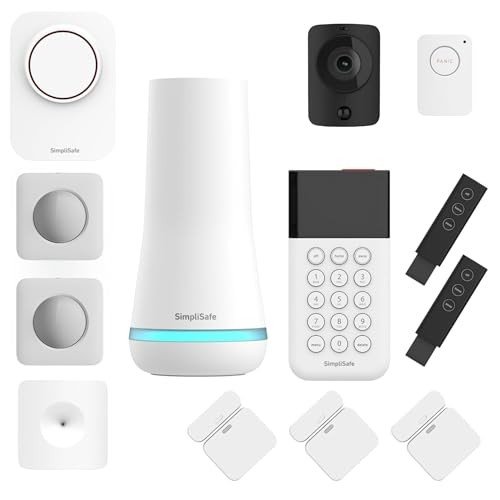A Comprehensive Guide to Buying Kitchen Lighting in the UK
When it concerns kitchen design, lighting plays an important role in functionality, aesthetic appeals, and total atmosphere. Picking the ideal kitchen lighting can considerably enhance how you use space, impacting whatever from meal preparation to entertaining visitors. With the large variety of choices readily available in the UK, it can be daunting to pick the ideal kitchen lighting. This guide aims to streamline the process and offer important insights into the different types of kitchen lighting, factors to consider, and tips on making notified choices.
Types of Kitchen Lighting
Understanding the different types of kitchen lighting is essential for accomplishing a well-lit area. Each category serves an unique purpose and can be utilized to develop a layered lighting result.
| Type of Lighting | Description |
|---|---|
| Task Lighting | Supplies focused illumination for specific jobs, such as cooking, reading recipes, or cleaning dishes. |
| Ambient Lighting | Deals general illumination for the entire kitchen, generally through overhead fixtures or ceiling lights. |
| Accent Lighting | Emphasizes particular functions or decorative components, such as art work, backsplashes, or architectural details. |
| Decorative Lighting | Adds a stylistic or visual touch, such as pendant lights and chandeliers that work as focal points. |
Task Lighting
Task lighting is important for guaranteeing security and efficiency while preparing meals. Under-cabinet lights, for instance, are a popular option as they illuminate the counter top without adding shadows, making jobs simpler.
Ambient Lighting
Ambient lighting offers a warm, inviting radiance to the kitchen. This can be achieved through ceiling-mounted fixtures, recessed lighting, or chandeliers. The key is to make sure uniform light circulation throughout the area.
Accent Lighting
Accent lighting, utilizing fixtures like wall sconces or LED strip lights, directs attention to specific areas or features within the kitchen. This kind of lighting can be especially reliable in showcasing beautiful backsplashes, cabinet designs, or decorative items.
Decorative Lighting
Decorative lighting adds character and design to a kitchen. Pendant lights above an island or a trendy chandelier can become statement pieces, improving the kitchen's total style.
Elements to Consider When Buying Kitchen Lighting
Selecting the suitable kitchen lighting involves assessing numerous essential factors to guarantee you make the best decisions for your area.
Design and Size of the Kitchen
- Comprehend the dimensions of your kitchen and determine essential work areas. Buy Ceiling Lights UK will figure out how you disperse lighting fixtures.
Performance
- Think about how you utilize the kitchen. If you frequently prepare or host, choose for task lighting. If your kitchen functions as a dining location, ambient lighting will also be vital.
Style and Aesthetics
- Guarantee lighting fixtures match the kitchen's design. Whether modern, traditional, or diverse, the style needs to balance with other components.
Color Temperature
- Light color considerably impacts the atmosphere. Warmer tones (2700K-3000K) develop welcoming environments, while cooler tones (4000K-5000K) are much better suited for task-oriented areas.
Energy Efficiency
- Think about LED choices, as they take in less energy and have a longer life expectancy compared to incandescent or halogen bulbs.
Dimming Capability
- Integrating dimmer switches enables versatility in changing light strength for various activities.
Tips for Buying Kitchen Lighting
When searching for kitchen lighting, keep the following pointers in mind:
- Measure First: Measure the areas where you prepare to install fixtures to ensure they fit well.
- Mix Fixtures: Combine different types of lighting for a well balanced technique, blending job, ambient, and decorative choices.
- Think about Placement: Pay attention to the height at which you install fixtures. For islands, pendants need to hang 30-36 inches above the surface.
- Determine Brightness: Look at lumens instead of watts; brighter does not always imply much better in regards to functionality.
- Pick Quality: Investing in quality fixtures will save you cash in the long run due to resilience and lowered maintenance needs.
Regularly Asked Questions (FAQs)
1. What is the very best kind of lighting for kitchen tasks?
Job lighting, such as under-cabinet lights or pendant lights over work surfaces, is perfect for kitchen tasks as it provides focused lighting.
2. How do I choose the right size of pendant lights?
A general general rule is that the diameter of the pendant must be around one-third the width of the island. If your island is 4 feet large, search for pendants that are around 12 inches in diameter.
3. Can I use a dimmer switch for all kinds of kitchen lights?
Not all lights are dimmable. Examine the item specifications before setup. LED lights and some fluorescent lights are more most likely to require compatible dimmer switches.
4. How can I improve my kitchen lighting without major remodellings?
Think about incorporating plug-in under-cabinet lighting, stylish floor lamps, or battery-operated LED lights to improve lighting without comprehensive changes.
5. Is it needed to work with a professional to install kitchen lighting?
While basic setups can be done individually, it's a good idea to hire a qualified electrician for intricate setups to ensure safety and functionality.
Choosing the ideal kitchen lighting in the UK involves understanding different lighting types, assessing important factors, and carrying out tactical tips. By focusing on the kitchen's layout, performance, and design, house owners can develop a well-lit, inviting space that enhances everyday activities and occasions. Whether embarking on a complete remodelling or an easy lighting upgrade, the ideal options will brighten both the kitchen and the cooking experiences shared within it.

